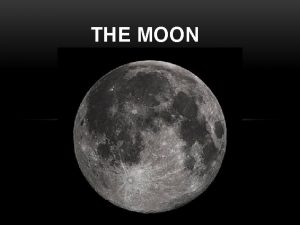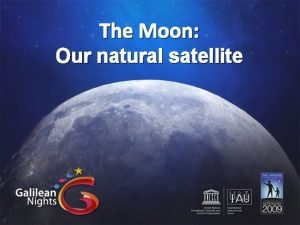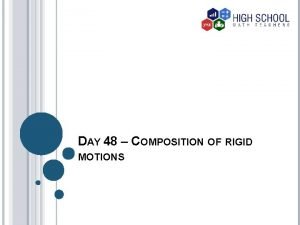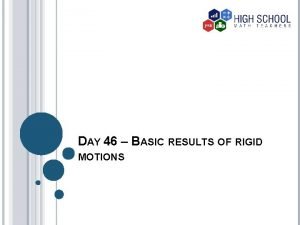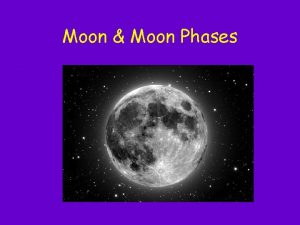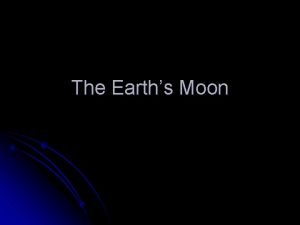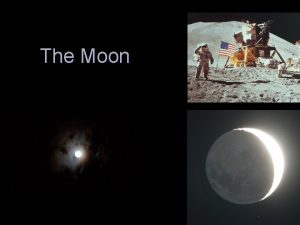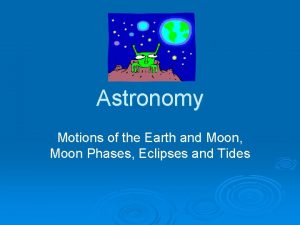MOTIONS OF THE MOON Motions of the Moon








- Slides: 8

MOTIONS OF THE MOON

Motions of the Moon: The moon orbits the earth and the earth orbits the sun; this leads to phases. • The moon’s orbit is not in the same plane as Earth’s orbit; this leads to eclipses. • It takes 27 days for the moon to complete one orbit. • Like the sun, the moon rises in the east and sets in the west.

• Phases of the moon occur because: the moon reflects sunlight the moon is in orbit around Earth Let’s watch what these phases are called!

A. Lunar Eclipses: • Umbra = area of total shadow • Penumbra = area of partial shadow • A lunar eclipse occurs when the moon passes into Earth’s umbra positions: sun – earth – moon occurs only at the full moon phase not every full moon due to different orbital planes at least one total lunar eclipse occurs per year lunar eclipse makes the moon appear dusky

B. Solar eclipses: • A solar eclipse occurs when the moon comes between the sun and Earth positions: sun – moon – earth occurs only at the new moon phase not every new moon due to different orbital planes of earth and moon • Total solar eclipse = the moon’s umbra and penumbra reaches Earth the moon is closest to Earth • Partial solar eclipse = the moon’s penumbra reaches Earth and umbra goes past Earth

SOLAR ECLIPSES Total Solar Eclipse Partial Solar Eclipse

C. Annular eclipse • This occurs when the moon’s penumbra reaches Earth but umbra fails to reach Earth because the moon is at aphelion (furthest point away from earth) • This results in a bright ring.


